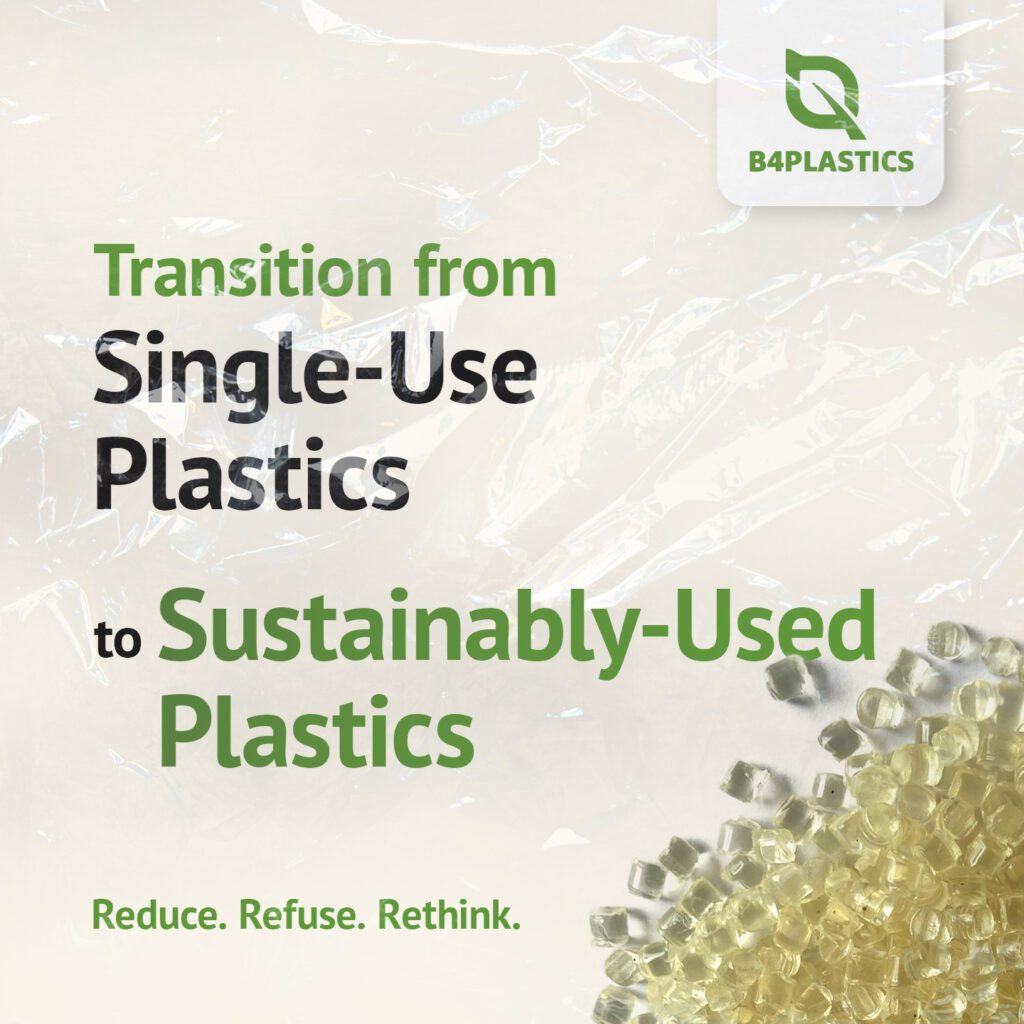Informative
Redefining SUP: Sustainably-Used Plastics benefitting planet and people
June 22, 2022
“Mei Plasticvrij” and Plastic Free July from another angle
When you type the word “plastics” in the Google images search engine and press Enter you are bombarded with pictures of plastics. But take a second look, those are pictures of plastic waste. The term plastics is strongly associated with plastics being intrinsically bad for flora, fauna, and humans. However, not the materials themselves are opposing this great risk to the planet but rather how we as humans handle them especially at their end-of-life.
The pitfalls of plastics are well known. Most of the conventional plastics are made from fossil resources, which are limited, and their extraction causes environmental concerns such as greenhouse gas emissions. Secondly, the mismanagement of plastic waste leads to an ongoing accumulation of plastics in soil, waterbodies, and even in the air. But by avoiding all plastics, we would do more harm than good.

Despite their bad image, plastics are usually the environmentally preferred option in most applications. The direct emissions attributed to, e.g., plastic packaging are drastically lower than those of alternative materials, such as paper-based solutions, glass, or metal 1. This is mostly due to their highly efficient production process and comparatively low processing energy requirements. But also indirect effects of plastic packaging contribute to environmental benefits. Especially in the case of food packaging, plastics play a key role in decreasing the amount of food waste by prolonging the shelf life of products and protecting it during transportation processes 2. Plastic packaging of fresh produce such as broccoli additionally helps to maintain nutritionally valuable components that would otherwise be released to the air during unpackaged storage time 3.
Though the majority of plastics are used for packaging or fast-moving consumer goods, their applications in other areas also leverage the mitigation of environmentally adverse effects. An example of this is the use of plastics in the transportation industry. In terms of volume, an average passenger car consists of 50 % of plastics. But those 50 % only account for 10 % of the weight of the car 4. Consequently, using plastics here leads to significant weight reductions which result in decreased fuel consumption and hence also less greenhouse gas emissions. Furthermore, plastics also contribute to the safety of cars 5. Even the windscreen which is mainly made from glass contains a thin layer of plastic that protects it from shattering.
After the plastic-free May month (“Mei Plasticvrij”) in Belgium, soon the plastic free July will start as a worldwide initiative. Evidently, it is extremely important to raise awareness on plastic consumption and handling and to incentivise innovative solutions to the aforementioned drawbacks of conventional plastics. However, simply cutting back or even eliminating the use of plastics would have a detrimental effect on the environment. In turn, the sustainable use of plastics should be promoted, by balancing their outstanding benefits with the least negative effects on the planet. So that we can enable the transition from Single-Use Plastics to Sustainably-Used Plastics with dedicated actions all together.
At B4Plastics, we want to create awareness about rational plastic implementation and use. Especially important to us, however, is to sensitize society about plastics not being the villain in the story we write for our common future. (Bio-)Plastics are a crucial part of the solution, but even more critical for a sustainable story is designing them for the most suitable end-of-life of a specific application. B4Plastics constantly develops sustainable alternatives to conventional plastics by creating novel solutions from biobased building blocks, hence, detaching plastic applications from their fossil dependency. Furthermore, we practice a holistic view on our innovations by specifically having the material end-of-life in mind, e.g. biodegradation or closed-loop recyclability. With our tailor-made polymers we provide our customers with the optimal balance of functional, ecological, and economical requirements.
Want to learn more about B4Plastics and our projects? Please scope around on our website or read more inspiring blog stories via our news page. Want to take action and interested to collaborate with B4Plastics? Discover our technology platforms here. To stay up to date with our progress: Subscribe to our newsletter and follow us on LinkedIn and Facebook.
1 e.g., Tamburini et al. 2021 Plastic (PET) vs bioplastic (PLA) or refillable aluminium bottles – What is the most sustainable choice for drinking water? A life-cycle (LCA) analysis. Environmental research 196; Kouloumpis et al. 2020, Potential trade-offs between eliminating plastics and mitigating climate change: An LCA perspective on Polyethylene Terephthalate (PET) bottles in Cornwall. The Science of the total environment 727
2 https://www.food-safety.com/articles/1448-packaging-materials-and-technologies-for-peak-food-safety-and-long-shelf-life
3 Serrano et al. 2006 Maintenance of broccoli quality and functional properties during cold storage as affected by modified atmosphere packaging, Postharvest Biology and Technology 39(1):61-68
4 Merkisz-Guranowska, A. (2018). Waste recovery of end-of-life vehicles. IOP Conference Series: Materials Science and Engineering. 421.
5 Pradeep, S.A., et al. (2017) Automotive applications of plastics: past, present, and future. Applied Plastics Engineering Handbook. William Andrew Publishing, pp. 651-673.
